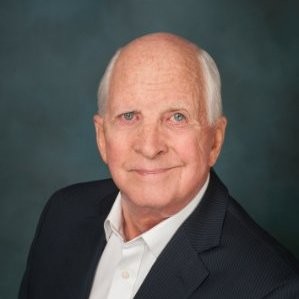Why Are Protective Safeguard Endorsements Dangerous? An Insurance Agent’s Prospective

Ken Hale, J.D., CPCU, CIC, AAI, LIC
Ken Hale is a well-credentialed insurance account executive with Marsh McClennan. His article about Protective Safeguard Endorsements, “The Insidious Protective Safeguard Provision: What Can You Do If It Can’t Be Avoided?” made the following warning:
We have been preaching for years that you should avoid a Protective Safeguard endorsement on a Property insurance policy at all costs.
In a nutshell, if your insurance carrier attaches a provision to your Property insurance policy titled ‘Protective Safeguard’ and lists either/or alarm systems, sprinkler systems, dust collecting systems, etc., you need to be absolutely sure that these items are always maintained in good working order and that they are never impaired. If they are impaired or do not work properly, the insurance company could, and likely will, deny what could be a major claim.
This endorsement is a no-excuses endorsement, which means that even if you had nothing to do with the impairment, you still will not be paid your loss. For example, the sprinkler contractor might turn off the sprinkler valve and forgot to turn it back on. In this case, the endorsement still applies.
You first have to ask why you have this clause on your policy. Some insurance carriers will attempt to add these to even superior accounts just as a matter of course. You need to inform your insurance agent that this clause is not acceptable to you and that it needs to be removed from your current insurance policy or the insurance agent needs to find another insurance company that will insure you without this clause. The Protective Safeguard endorsement is that dangerous.
Insurance agent educator Bill Wilson wrote an article about Protective Safeguard Endorsement, “Protective Safeguards” Requirements:
The two most important points of this article are that Protective Safeguards endorsements must be read carefully and followed to the letter to insure coverage and common sense doesn’t always have a place in insurance policy interpretation. If you can avoid a Protective Safeguards endorsement without sacrificing a premium discount, that may save your insured an unexpected and inexplicable loss.
The Gonzalez & Company Insurance Agency warned about these clauses in Avoid Insurance Suspension – Learn About Protective Safeguard Endorsements:
We spend a lot of time warning our clients about aspects of their policy that could render certain coverages unviable.
Today, we’re going to talk about a clause that could suspend your entire policy – without you being aware of it. The protective safeguard endorsement is overlooked by 99.9% of clients – and if you aren’t aware of its implications, it could cost you 100% of your coverage.
…
However, protective safeguards are often neglected by property owners after they’re installed. Fire alarms whose batteries have run out are a common example, but every protective safeguard can easily become defunct and useless for its purpose – which is when it becomes problematic for the policy holder.
Globe Adjustment and Adjusters International warned insurance agents that policyholders who face claims denials based on Protective Safeguard Endorsements may sue their insurance agents. The article, Protecting Your Agency From a Protective Safeguards Endorsement, provided advice to insurance agencies:
When claims are denied based on failure to comply with a protective safeguard it is very common for the insured to assert that they were unaware of the requirements and to look to their agency for recovery. In Michigan, there is a general principle that the insured is deemed to have read the insurance policy, which creates an absolute defense for insurance companies when the insured claims that they were unaware of the requirement. This same defense does not apply to agents, so that the agent may still be liable for damages. To protect your agency, consider the following:
Give written notice to the insured of the protective safeguard endorsement.
Also, request written confirmation from the insured that they are in compliance with the protective safeguard requirements.
Recommend in writing that the insured must notify you of any impairment or change in the required devices or services.
Recommend, in writing, that the insured retain records of all maintenance to any required devices. This would include both internal maintenance as well as maintenance by outside contractors.
Provide the insured with written reminders of the above at each renewal.
Review the policy when it is issued or renewed to make sure the carrier did not add, or modify, a protective safeguard endorsement without informing you (yes, this happens).
If Protective Safeguard Endorsements are so dangerous to coverage, why have them? The answer is that it is not always possible to avoid them. This post and Protective Safeguard Endorsements — A Warning Every Policyholder Should Receive About Protective Safeguards, underscore that the policyholder is taking on significant additional risk any time a protective safeguard is required under the policy. Protective Safeguards are like ticking time bombs because those protective safeguards, like everything else in life, will eventually not work for one reason or another. Hoping that such a breakdown does not occur when a loss happens is a poor method of risk reduction, and experienced insurance agents know it.
Thought For The Day
A big part of financial freedom is having your heart and mind free from worry about the what-ifs of life.
—Suze Orman







